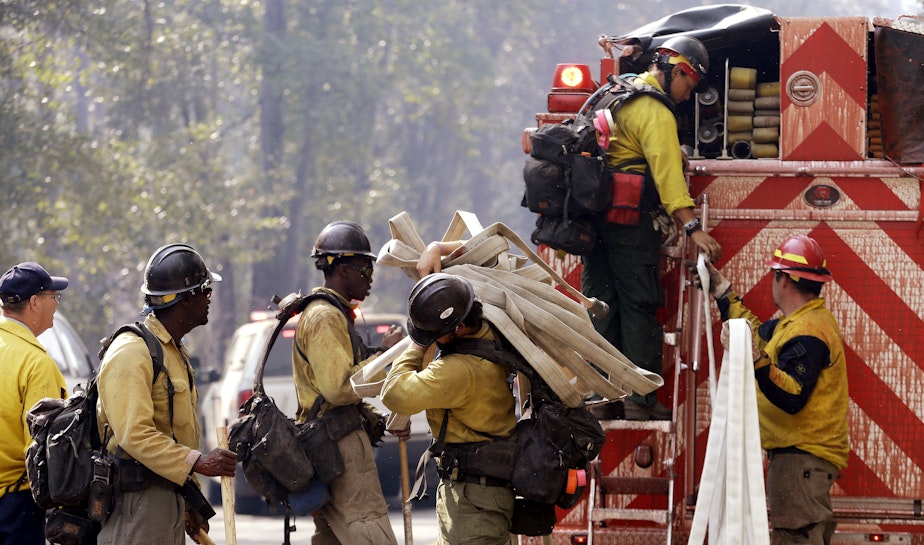How To Help And Who Should Volunteer In Wildfire Fight

The state of Washington is taking an extraordinary step to battle the wildfires ravaging the region: seeking volunteers to join the fight. And the response so far is overwhelming.
“We’ve had hundreds of people call and email and we’ve had a couple of dozen people here this morning,” Joe Smillie, a Department of Natural Resources spokesman, said by phone Friday morning from Omak City Hall, one of two volunteer coordination centers.
State officials aren’t asking for just anyone’s help. They're seeking those with a firefighting "red card," meaning they're qualified to work on a fire line, or a "blue card," meaning they're qualified to work in the field but behind the lines.
So where does that leave the average person without such special training?
Smillie suggested donating to the Red Cross or contacting it at 1-800-RedCross to ask about volunteer opportunities. If you yourself need help, the governor’s office lists resources here.
Sponsored
Local agencies that are seeking donations include:
- United Way of Chelan & Douglas Counties, http://www.uwcdc.org/ or 509-662-8261
- Community Foundation of North Central Washington, http://www.cfncw.org/ or 509-663-7716
- Okanogan County Community Action Council, http://occac.com/ or 509-422-4041
Beth Stipe, executive director of the Community Foundation of North Central Washington, said the best way to help victims of the fires right now is with cash donations.
“You know, we just don’t have the ability to store items, so really just cash and gift cards are the best ways that people can immediately get help to those that need it,” she said.Smillie said some of those who have checked in have good qualifications, although they might need training before heading into the field. He said coordinators were trying to be encouraging to others who might not have the necessary qualifications.“We have had quite a few people who say, ‘I have a strong back and will to help,’ so we’re seeking contact information for help down the line,” Smillie said.The state has established centers in Omak and Colville to triage volunteers. It asked potential volunteers to contact the coordinators by phone or email before coming to the centers.There have been a few problems with the effort so far, he said, such as the number of calls.“I listened to 29 phone messages this morning and when I hung up I had 16 more,” he said.Then there’s finding specialists to figure out who is ready to go and who needs more skills.“Even if a member of the public has sufficient credentials, deployment to a wildfire will depend on the availability of professional firefighter staff to accompany, direct, and ensure the safety of everyone concerned,” DNR said on its website.With strong winds fanning the flames of the Okanogan Complex and Chelan Complex fires, which have burned more than 200,000 acres from Omak to Twisp, those personnel are out on the fire lines and can’t be spared to vet volunteers, he said.Some 3,000 firefighters from federal, state and local agencies are battling the flames. National Guard personnel are involved, the regular Army is contributing soldiers, and experts from other countries have flown in to help.This is the second time in two years that north-central Washington has experienced devastating fires. The Carlton Complex fires burned 256,000 acres in 2014.Stipe said that even with donations and offers of help, it'll take time for the communities in Okanogan County to heal -- especially after the deaths of three firefighters this week.“It’s one thing to watch your community burn, it’s another thing to lose lives, and that’s I think the thing that’s most upsetting to us all of us here in north central Washington."We’ll re-build, we’ll figure it out. The challenges are huge, but nothing compares to the deaths of those young men.”

